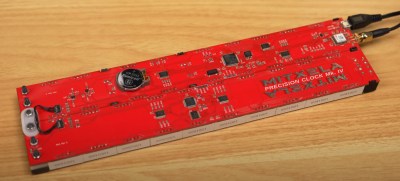Ever want to find your device on the map? Think we all do sometimes. The technology you’ll generally use for that is called Global Positioning System (GPS) – listening to a flock of satellites flying in the orbit, and comparing their chirps to triangulate your position.
The GPS system, built by the United States, was the first to achieve this kind of feat. Since then, new flocks have appeared in the orbit, like the Galileo system from the European Union, GLONASS from Russia, and BeiDou from China. People refer to the concept of global positioning systems and any generic implementation as Global Navigation Satellite System (GNSS), but I’ll call it GPS for the purposes of this article, and most if not all advice here will apply no matter which one you end up relying on. After all, modern GPS modules overwhelmingly support most if not all of these systems!
We’ve had our writers like [Lewin Day] talk in-depth about GPS on our pages before, and we’ve featured a fair few projects showing and shining light on the technology. I’d like to put my own spin on it, and give you a very hands-on introduction to the main way your projects interface with GPS.



















